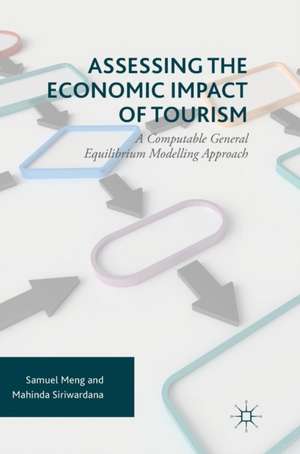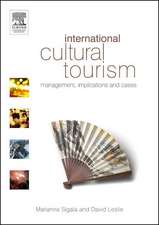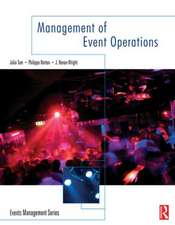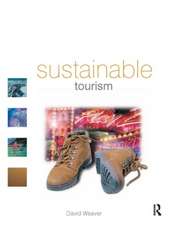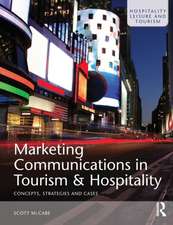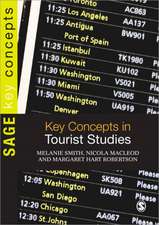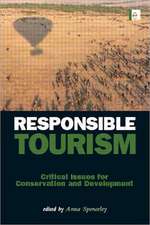Assessing the Economic Impact of Tourism: A Computable General Equilibrium Modelling Approach
Autor Samuel Meng, Mahinda Siriwardanaen Limba Engleză Hardback – 15 dec 2016
| Toate formatele și edițiile | Preț | Express |
|---|---|---|
| Paperback (1) | 782.10 lei 6-8 săpt. | |
| Springer International Publishing – 3 iul 2018 | 782.10 lei 6-8 săpt. | |
| Hardback (1) | 794.25 lei 6-8 săpt. | |
| Springer International Publishing – 15 dec 2016 | 794.25 lei 6-8 săpt. |
Preț: 794.25 lei
Preț vechi: 968.60 lei
-18% Nou
Puncte Express: 1191
Preț estimativ în valută:
151.98€ • 162.52$ • 126.72£
151.98€ • 162.52$ • 126.72£
Carte tipărită la comandă
Livrare economică 18 aprilie-02 mai
Preluare comenzi: 021 569.72.76
Specificații
ISBN-13: 9783319403274
ISBN-10: 3319403273
Pagini: 271
Ilustrații: XVIII, 354 p. 28 illus., 10 illus. in color.
Dimensiuni: 148 x 210 x 23 mm
Greutate: 0.79 kg
Ediția:1st ed. 2017
Editura: Springer International Publishing
Colecția Palgrave Macmillan
Locul publicării:Cham, Switzerland
ISBN-10: 3319403273
Pagini: 271
Ilustrații: XVIII, 354 p. 28 illus., 10 illus. in color.
Dimensiuni: 148 x 210 x 23 mm
Greutate: 0.79 kg
Ediția:1st ed. 2017
Editura: Springer International Publishing
Colecția Palgrave Macmillan
Locul publicării:Cham, Switzerland
Cuprins
1. An Introduction to CGE Modelling.- 2. Useful CGE Modelling Packages.- 3. Application of CGE Modelling on Tourism.- 4. Collecting Background Information for a Tourism CGE Model.- 5. Creating a Tourism CGE Model.- 6. Preparing Database for a Tourism CGE Model.- 7. Model Implementation and Testing.- 8. Interpretation of Results from a Tourism CGE Model.- 9. Frontiers of Tourism CGE Modelling.
Notă biografică
Samuel Meng is a senior research fellow at the University of New England, Australia. He is an experienced CGE modeller and a specialist in tourism modelling. He has published a number of papers in leading academic journals and won a prestigious Australian Research Council grant with his colleagues in 2012.
Mahinda Siriwardana is Professor of Economics at the University of New England, Australia. His main research interests include CGE modelling, trade policy analysis and carbon price modelling. He has published seven books and numerous journal articles. His is also a recipient of several Australian Research Council grants.
Textul de pe ultima copertă
This book employs a computable general equilibrium (CGE) model – a widely used economic model which uses actual data to provide economic analysis and policy assessment – and applies it to economic data on Singapore’s tourism industry. The authors set out to demonstrate how a novice modeller can acquire the necessary skills and knowledge to successfully apply general equilibrium models to tourism studies. The chapters explain how to build a computable general equilibrium model for tourism, how to conduct simulation and, most importantly, how to analyse modelling results. This applied study acts as a modelling book at both introductory and intermediate levels, specifically targeting students and researchers who are interested in and wish to learn computable general equilibrium modelling. The authors offer insightful analysis of Singapore’s tourism industry and provide both students and researchers with a guide on how to apply general equilibrium models to actual economic data and draw accurate conclusions.
Caracteristici
Encourages readers to explore alternative applications of computable general equilibrium models
Addresses the gap between mathematical explanations and applications of CGE modelling
Analyses simulation results giving insight into tourism demand and different tourism policies
Addresses the gap between mathematical explanations and applications of CGE modelling
Analyses simulation results giving insight into tourism demand and different tourism policies
